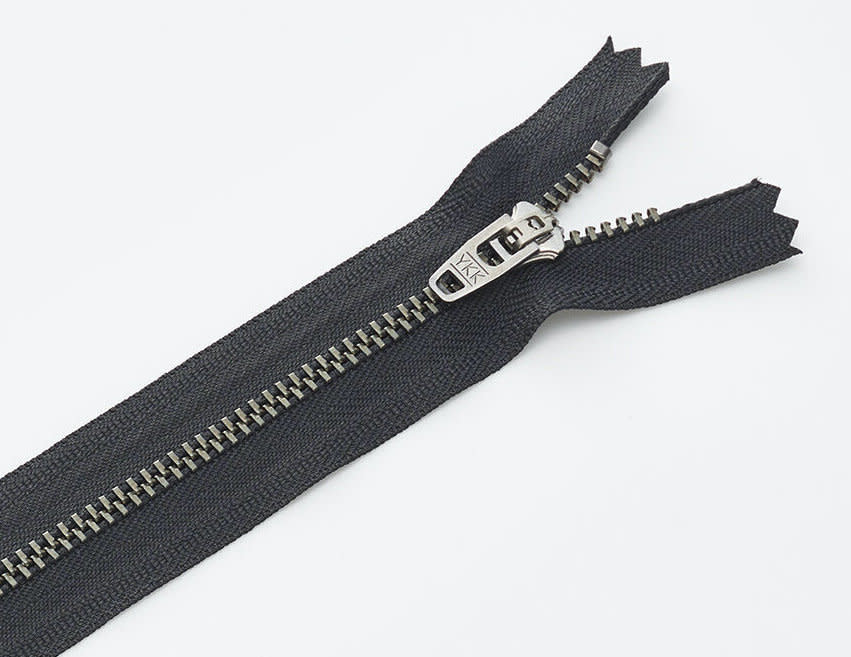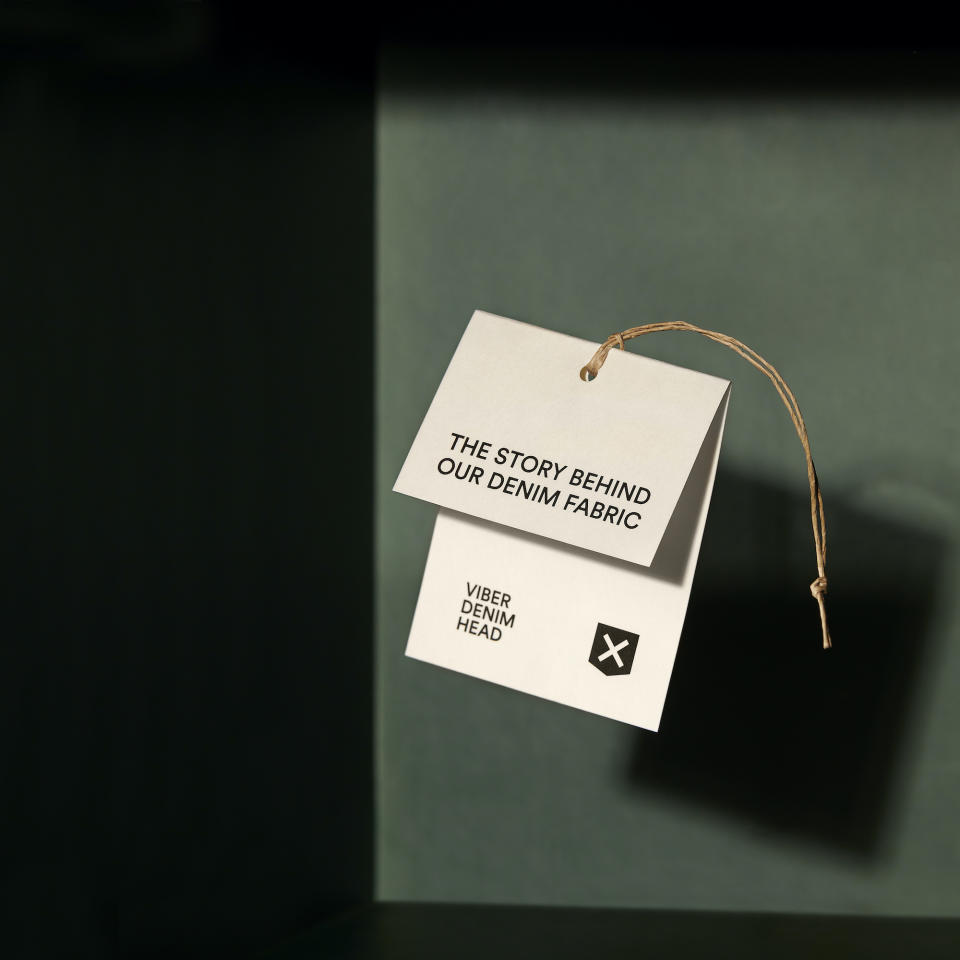Recyclable Materials and Digital Solutions Drive Newness in Trims for Jeanswear

Trim manufacturers are growing their sustainable product ranges.
Their Fall/Winter 2024-2025 collections build on existing sustainable materials and technologies while homing in on relevant fashion trends.
More from Sourcing Journal
“The overarching theme is one of conscious consumption, with an emphasis on upcycling, recycling, and reducing waste in the production process, as well as facilitating a prolonged garment lifecycle,” said Morten Frost Madsen, Trimco Group design manager. “And that trend is met across the industry, more and more dictated by regulations and appreciated or embraced by consumers.”
For Trimco, which provides solutions for brand identity, supply chain traceability and RFID technology, sustainability begins with inputs. Ninety-four percent of the company’s F/W 24-25 collection is made with sustainable fibers and materials. The collection also includes Trimco’s first 100 percent natural woven labels, and the first recycled textile waste polyester labels.
Materials in the company’s collection span organic cotton, fiber-to-fiber recycled polyester, bio-based recycled materials, and combinations of Refibra, Tencel and SeaCell, a cellulose-based yarn that is mixed with seaweed. Recycled silicone is still a strong choice for badges and heat transfers. “By incorporating innovative materials and items made from recycled textile waste, we’re reducing our reliance on virgin resources,” said Lone Mogensen, Trimco Group’s sustainability coordinator and materials expert.

YKK’s non-toxic metal plating technology AcroPlating is now available on more items and in a wider range of colors, and the company is continuing its transition from virgin polyester yarn to recycled polyester yarn for all zipper tapes. This includes its two most popular denim zippers, the 3Y and 5M.
“Customers continue to look for more sustainable trims for their products. They are asking for a wider variety of items made from recycled materials,” said Brian La Plante, senior manager, sustainability for YKK (USA) Inc. global marketing group.
One of YKK’s solutions is a new 100 percent mono-material recycled metal detachable shank button and rivet. La Plante said the durable button and rivet can be easily removed with a simple tool at the end of the garment’s life and then recycled. It is available in a variety of finishes and can be customized.

Trimco is employing circular design principles to help brands minimize and engage in circular processes. “Mono-materials and made-to-last are still key words which we always try to incorporate into our collections as it has a strong focus for many of the brands we work with,” Mogensen said.
Products that align with the requirements of circular initiatives like the Ellen MacArthur’s Jean Redesign, which is supported by global brands like Tommy Hilfiger, H&M and Primark, is an area of growth in the trims category.
French trims company Dorlet released a new circular product called The Tackat, a circular button that can be reused up to seven times and helps speeds up production.
Thibault Greuzat, Dorlet president, said the majority of today’s circular buttons use a screw and are often assembled manually which lengthens production times. “The Tackat product can be fitted to jeans in the same way as a traditional button, with no need to change machines and therefore no loss of productivity,” he said.
Greuzat added that Tackat is really made for consumers, not for brands. “If [each person had their] own set of Tackat we could reduce drastically the production of buttons,” he said.
The buttons are available in Dorlet’s eco colors, a range of 50 colors that are achieved with processes that require less water, electricity, metal and chemicals compared to traditional electroplating.
Versatile, classic designs are key to extending the life of sustainable trims.
“Customers are interested in matte silver finishes such as platinum and tin, and styling that is straightforward with clean, simple lines,” La Plante said.
Trimco is seeing interest in earthy and neutral tones as well as pops of bold, jewel-inspired hues. Frost Madsen added that textures are leaning toward a mix of soft and cozy fabrics, combined with more structured, durable materials.
Cadica’s collection called Matter Transition also takes inspiration natural colors and textures like burnt surfaces and crackled soil. Meanwhile, the Italian company’s new packaging collection is inspired by silver. Carlo Parisatto, Cadica Group’s chief marketing officer, said the collections are the result of research for innovative materials and the company’s commitment to the lifecycle of its products.

Riri, which became part of the Oerlikon Group in March, is betting on otherworldly textures for F/W 24-25. The company’s Galactic Shine collection uses silver textures, brushed finishes in gray and light gold and science fiction-inspired glosses. A line of texturized black trims plays on tonal contrasts.
The use of amber, rose gold and diamond and geometric prints warms up Riri’s collection. The company contrasts these elegant motifs with Ghostly Ice, a range of accessories that nod to the skiing market. The trims features transparent surfaces and icy effects achieved with Riri’s PVD technology, a finishing process that requires zero chemicals and has no presence of heavy metals in the wastewater. Water consumption, greenhouse gas emissions and waste are considerably reduced.
“Most brands are often looking for trims that will fit into a sustainable strategy as well as fit into the current fashion trends,” Trimco’s Mogensen said. “I do not believe in limiting ourselves or our creativity on account of sustainability. We expect that whatever trends we see or get requested, we can and will supply trims with the right look, feel, and sustainable content. Sustainable materials are the new standard.”
The technologies that brands can use to trace, design and catalog their trims is evolving as well.
Trimco is developing ways to use use traceability technologies in both the manufacturing process and as part of the final product. The implementation of QR codes for storing data online and reducing the material used for trims is one way of using technology combined with supply chain traceability and transparency projects, Frost Madsens said.
He added that the company is also experimenting with “future technologies” like sew-in RFID options or washable RFID tags as solutions together with QR codes to run resell projects, authenticate garments and, again, facilitate recycling.
In a 2022 survey, YKK found that their customers wanted to customize a finished zipper digitally and to identify the correct item descriptions and codes for their customized zippers. The company developed the YKK Trim Creator with Vntana, a 3D infrastructure technology company, to address those needs.
Launched in May, the 3D configurator aims at helping designers visualize trim options, design trims, and generate item codes. Vntana’s patented optimization algorithms enable YKK clients to easily view thousands of customized options. This makes it easy for designers to specify the correct fastener components, see the design in real-time in 3D, and share the 3D model through a simple URL.
With this integration, customers will see a significant time savings in the design process. YKK Trim Creator also enhances the efficiency of the zipper design and adoption process and minimizes the need to create the usual volume of physical zipper samples. This decreases costs and carbon footprint by cutting back on waste and shipping while improving the sales process for buyers.

